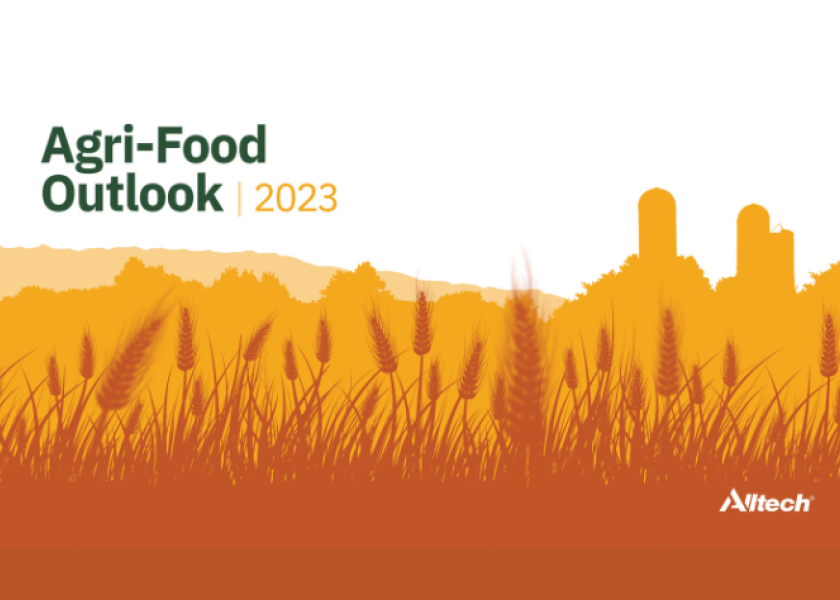Global Feed Production Estimates Released in 2023 Alltech Agri-Food Outlook

Combining data from 142 countries and over 28,000 feed mills, Alltech recently shared its 2023 Alltech Agri-Food Outlook containing global feed production survey data estimates.
Alltech data shows global feed production to have remained almost steady in 2022, totaling 1.266 billion metric tons with a decrease of only 0.42% compared to the 2021 estimates.
Data shows the top 10 feed-producing countries in 2022 include:
1. China, 260.739 million metric tons (MMT)
2. United States, 240.403 MMT
3. Brazil, 81.948 MMT
4. India, 43.360 MMT
5. Mexico, 40.138 MMT
6. Russia, 34.147 MMT
7. Spain, 31.234 MMT
8. Vietnam, 26.720 MMT
9. Argentina, 25.736 MMT
10. Germany, 24.396 MMT
The survey notes, the top 10 countries together produced 64% of the world’s feed production and half of the world’s global feed consumption is concentrated in four countries: China, the U.S., Brazil and India.
Total feed production saw increases in Latin America (1.6%), North America (0.88%) and Oceania (0.32%), while Europe saw the largest decrease (4.67%), followed by Africa (3.86%) and the Asia-Pacific region (0.51%), the survey concludes. Specifically, increases in feed tonnage were reported in the aquaculture, broiler, layer and pet food sectors, while decreases were reported in beef, dairy and pig sectors.
Pigs: The data notes pig feed production was down globally by nearly 3% in 2022, due to African swine fever and high feed prices that decreased pig production around the world.
Dairy: Dairy feed tonnage decreased by 1.32%, mostly due to the high cost of feed along with lower milk prices, ultimately causing farmers to reduce their cow herd or rely on non-commercial feed sources, Alltech’s release explains.
Beef: With a slight decrease of 0.34% globally, beef feed production saw its largest decrease in Europe with increases in most other regions.
Across the board, pet feed production had the highest increase (7.25%) globally—due to the rise in pet ownership in response to the COVID-19 pandemic.
The 2023 Alltech Agri-Food Outlook is a compilation of data from feed mills and industry and government entities from around the globe. More data and insights can be found on the Alltech website.







